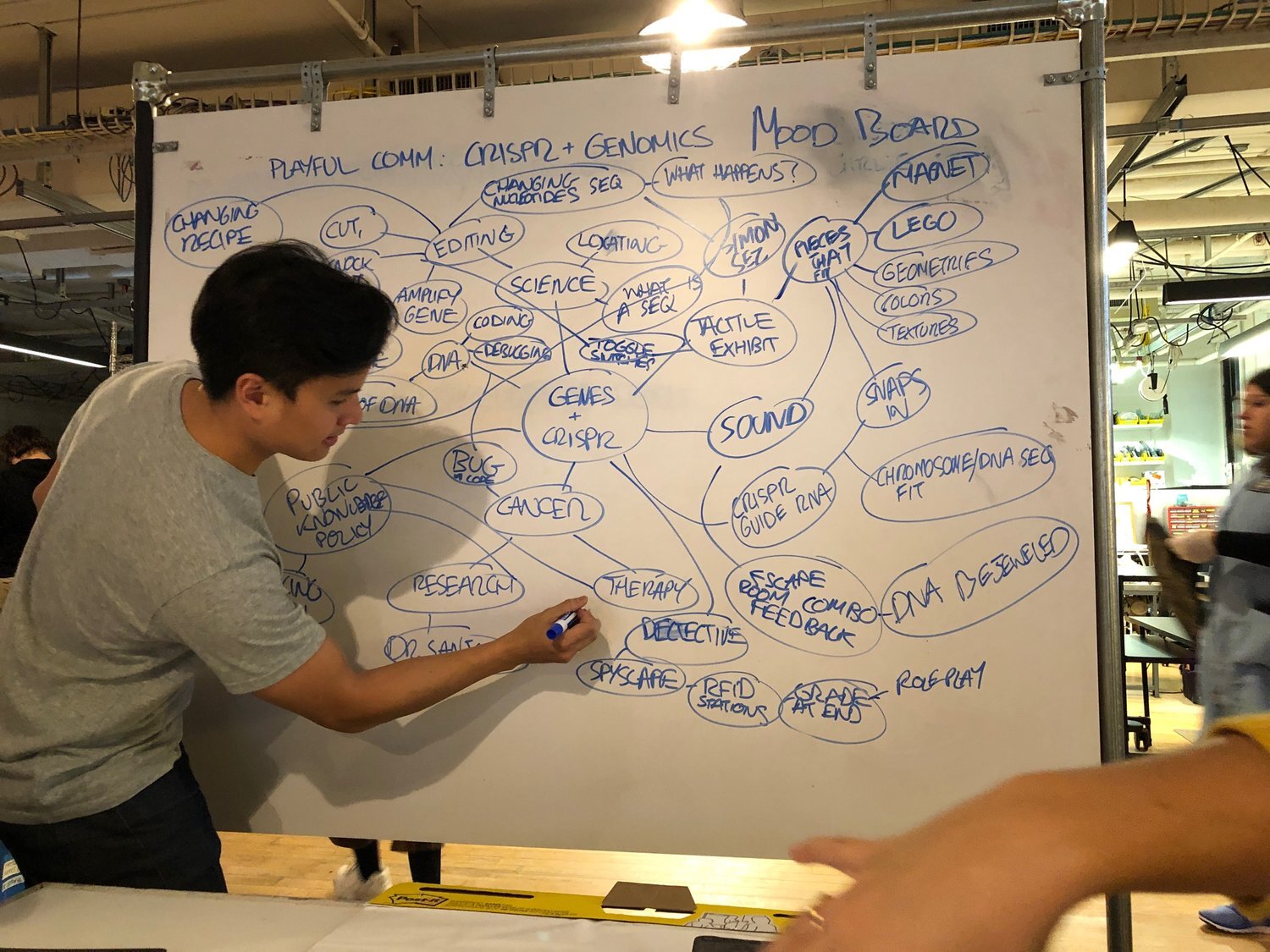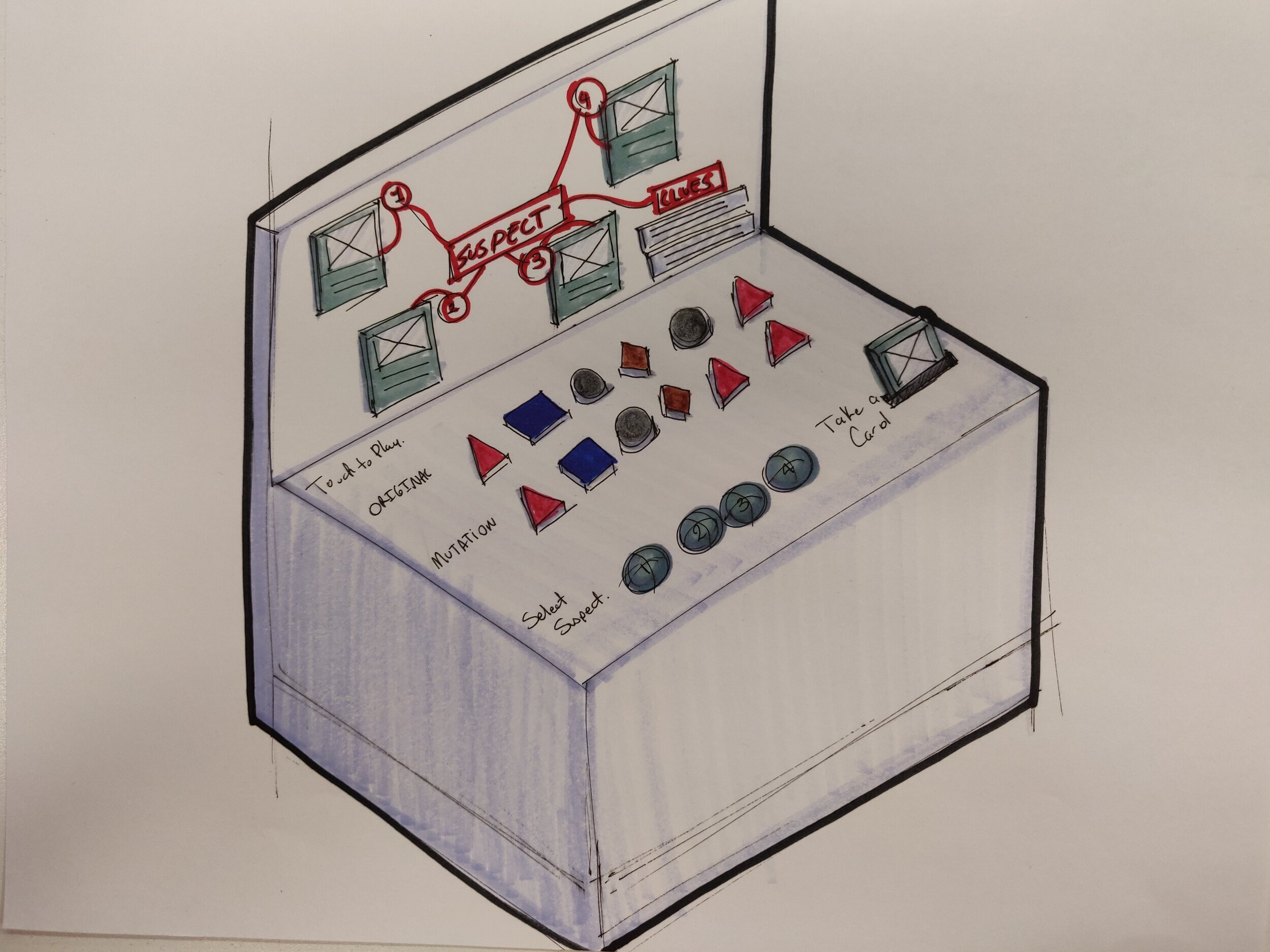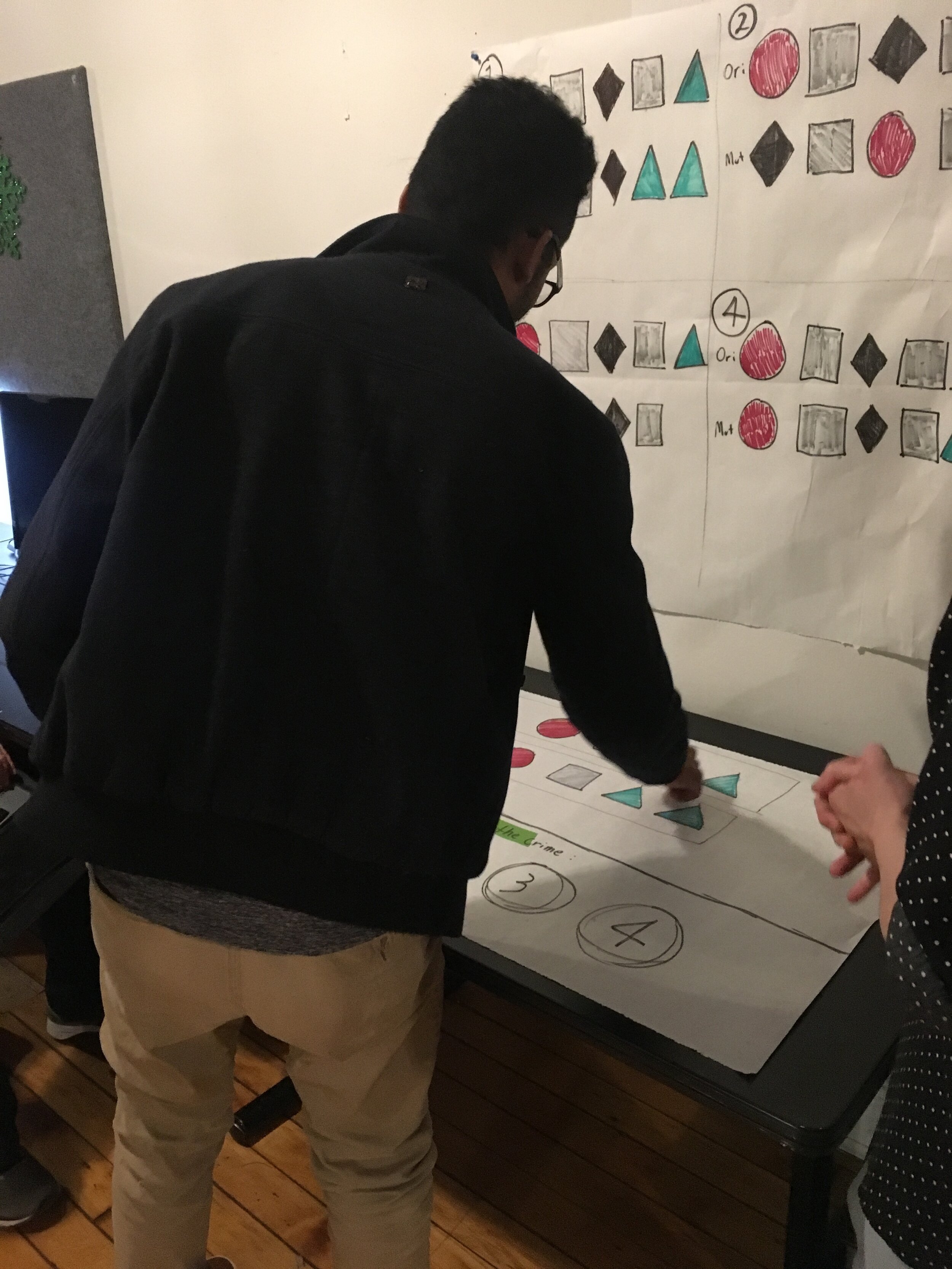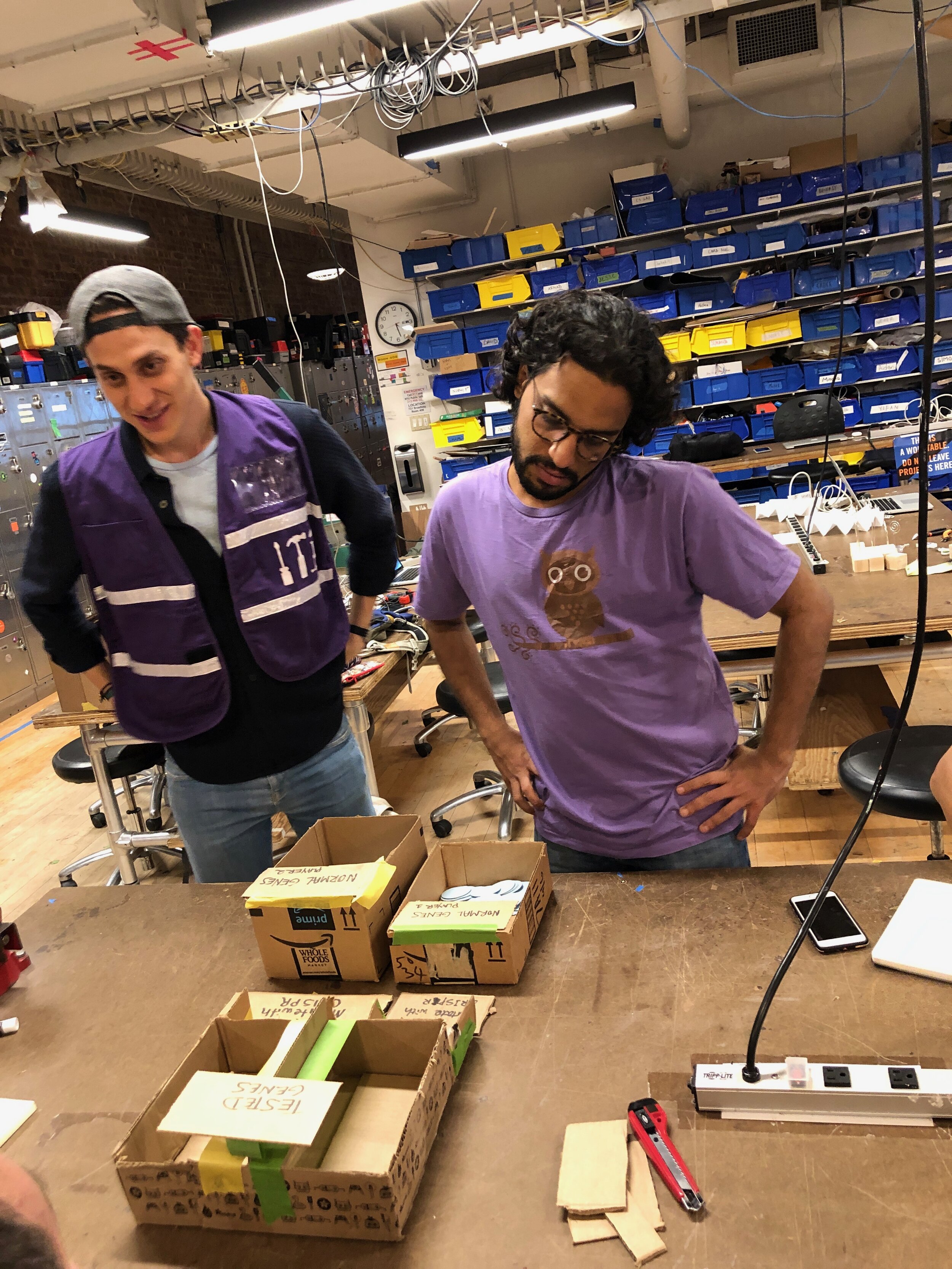
CRISPR Detective
A three-module interactive exhibit that teaches visitors about CRISPR-Cas9.
My Role
UX Design
Visual Design
Prototyping
User Testing
Fabrication
Team
Cara Neel
Veronica Alfaro
Jingyi Wen
Adrian Bautista
Antonio Guimares
Timeline
4 months
Ideation
Research Topic
My team chose to focus on Dr. Neville Sanjana’s work on the novel uses of CRISPR in cancer genomics, in particular using CRISPR to identify metastasis-causing mutations in cancer cells.
Scope and Tone
When deciding how much scientific background we needed to include in our exhibit, we decided to cover the basics of DNA, genes, and simple mutations before introducing the idea of CRISPR. We would do this by giving visitors introductory case files. We wanted to convey a sense of excitement about the potential uses of CRISPR while steering clear of the “designer babies” discourse, while still acknowledging that CRISPR was a powerful tool with limitations and drawbacks.
Theme
After narrowing down a giant list of initial ideas, we decided to focus on a detective-noir theme, where metastasized cells were crime ring members and participants in the exhibit were detectives tasked with uncovering them. Participants needed to distinguish between genetic civilians (mutations that don’t cause metastasis) and the metastasis mafia (mutations that do cause metastasis).
Accessibility
To ensure our design was accessible to the visually impaired, all written materials included in the exhibit were either accompanied by braille or audio instructions. Additionally, we made the focus of the experience more tactile than visual. Our teammate Antonio Guimares, who is visually impaired, was crucial for these design insights.
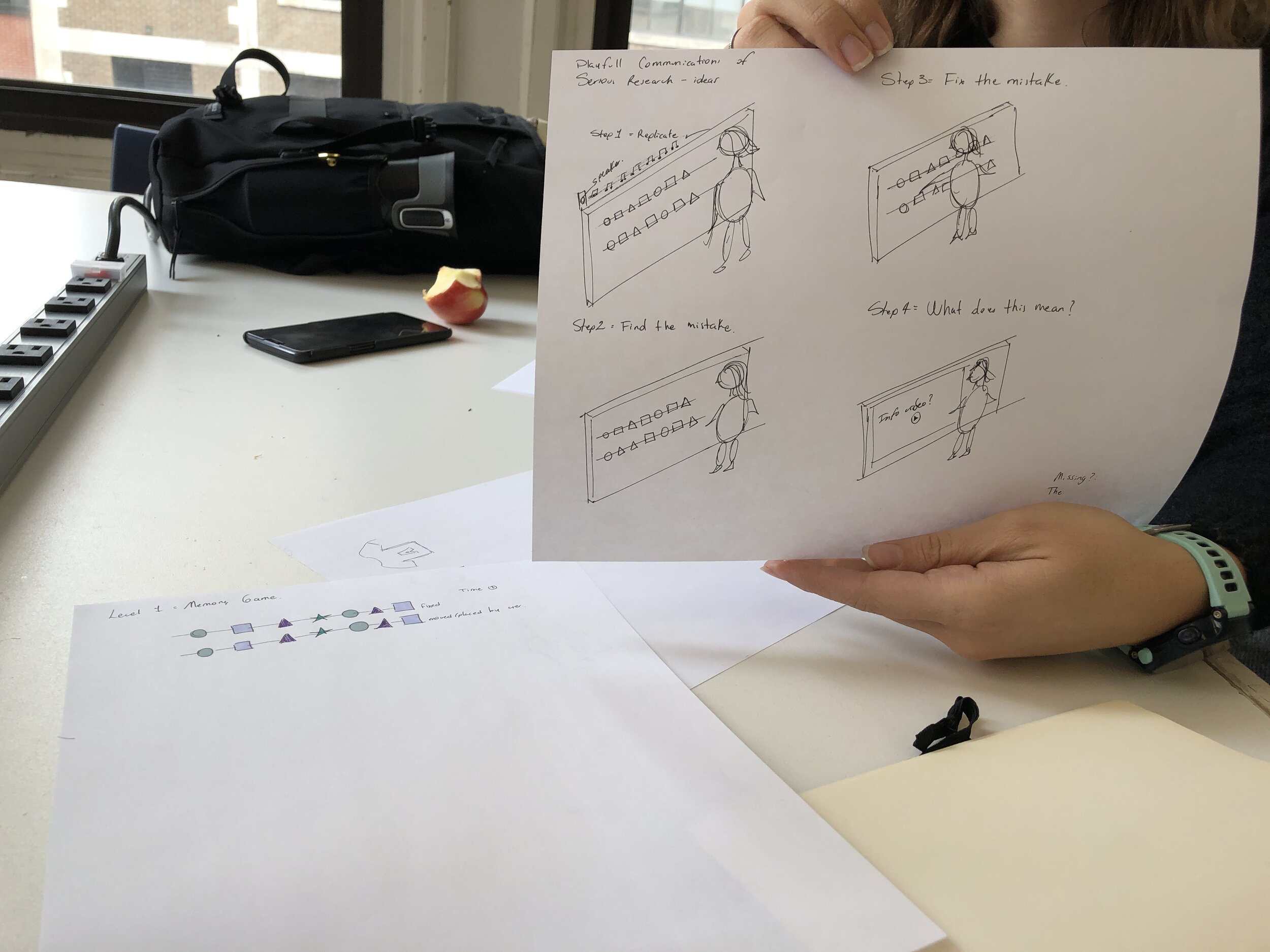
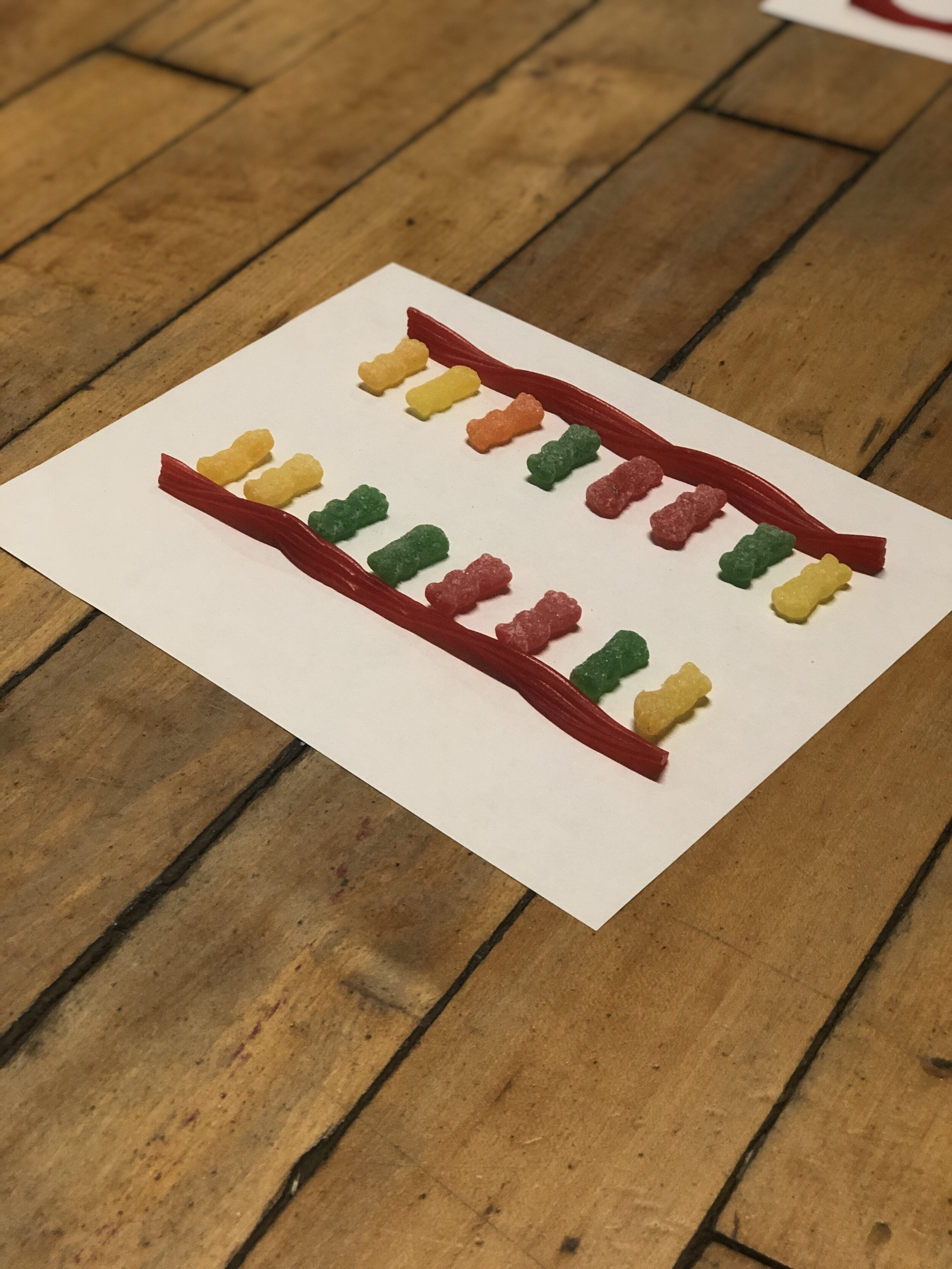
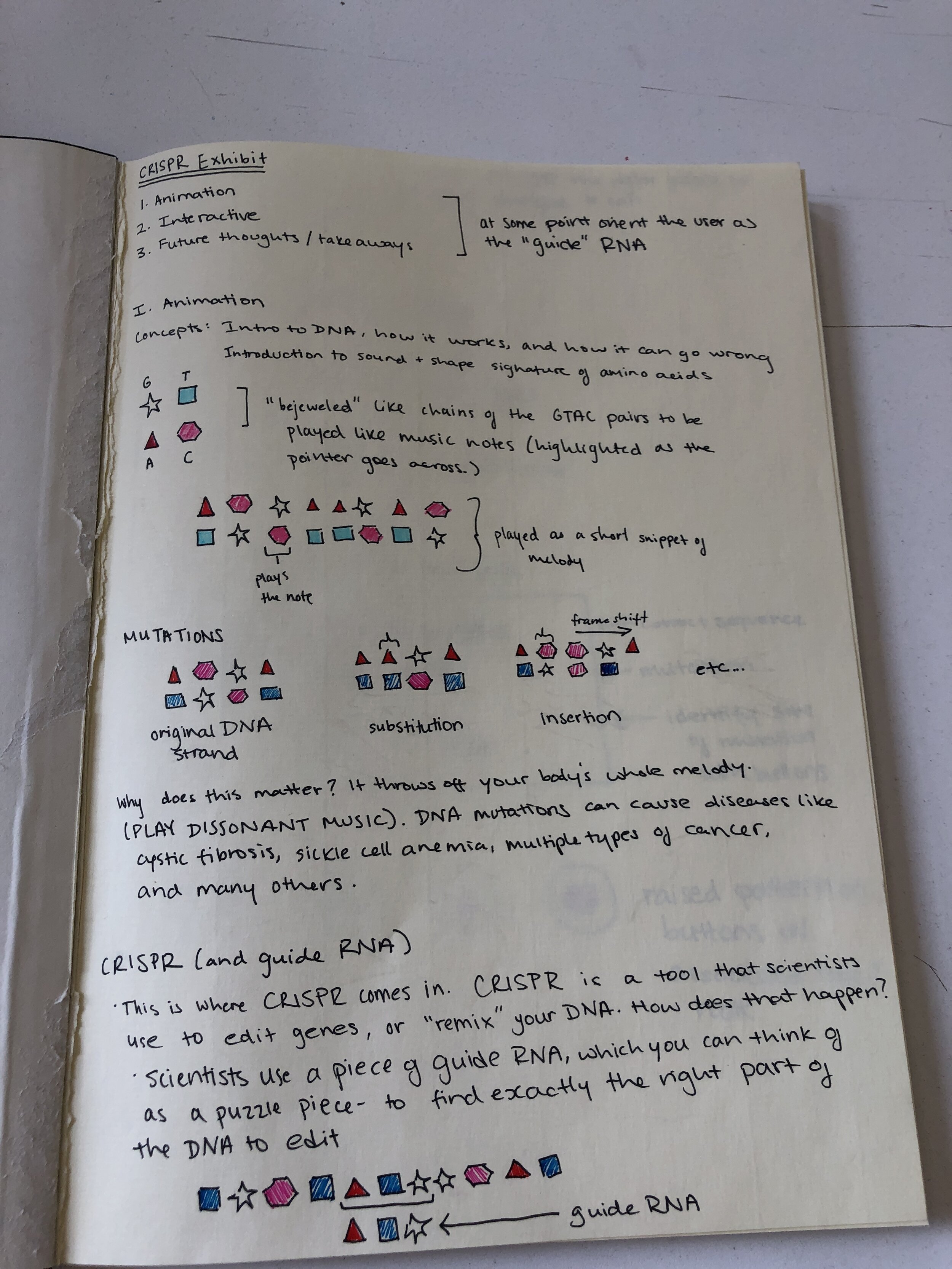

Prototyping and Usability Testing
Our first idea hinged on a tone-matching game, where “genetic suspects” would be presented on a whiteboard and visitors would need to solve which kind of mutation (missense, insertion, deletion) matched with each suspect and the mutation in question. However, in our first round of low-fidelity user testing, we found that the learning curve for the interaction was too steep, and that visitors were unable to progress through the exhibit or walk away with the information we were hoping to impart. It was back to the drawing board for us.
Iteration, Redesign, and Second Round User Testing
In our second design, we focused on communicating the speed and accuracy with which CRISPR can identify mutations. We created genetic fingerprints that could be scanned on a CRISPR machine in order to identify whether they were members of the metastasis mafia or were merely innocent genetic civilians.
After user-testing the redesign, we received feedback that in order to convey that CRISPR allowed for fast, accurate gene editing, it would be helpful to have a complementary slow activity to hit home the point that CRISPR represented an advance in technology. That led us to create what would eventually become module 2, which was an opaque jar where users had to find metastasis mafia member by using only their sense of touch. This module represented gene editing before the advent of CRISPR.
Final Design
Module 1
Visitors are given “case files” that explain the basics of DNA, genes, and mutations. They must familiarize themselves with the case files before they can move on to identifying members of the metastasis mafia.
Module 2
Visitors visit the science of the past: they are tasked with identifying mafia members from a pool of suspects, but without the use of CRISPR. They compete with another visitor to catch the mafia member, timed, using only their tactile senses.
Module 3
An interactive game using RFID technology: visitors scan as many fingerprints as they can with the CRISPR Detective Machine to see who can identify more mafia members in the time limit.
Module 3 in action
Exhibition






